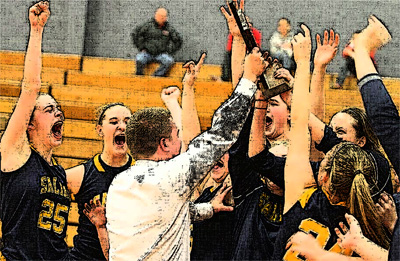Team Stats Trump Individual Stats

Golfer Padraig Harrington recently said, “Statistics are often used as a drunk uses a street light – for support rather than illumination.”
Benjamin Disraeli, former prime minister of England, wrote, “There are three kinds of lies: little lies, big lies, and statistics.”
I do believe there is some truth in what both of these men are stating. Some statistics can actually be used to support both sides of an argument, so you do have to analyze them carefully. However, there is one area where we believed we wanted to use statistics, namely, team success.
 In our 44 years of coaching basketball, we rarely used individual statistics, with the exception of conference meetings at the year’s end when All-Conference players were being selected. We did cite individual stats to support the nomination of our players.
In our 44 years of coaching basketball, we rarely used individual statistics, with the exception of conference meetings at the year’s end when All-Conference players were being selected. We did cite individual stats to support the nomination of our players.
What we did, however, was to take great credence in team statistics. Because our emphasis was constantly on “us” as opposed to “you,” we used team stats to illustrate why we were successful. Whenever we held an opponent under 40% field goal shooting in a game, we made sure we complimented our athletes on that accomplishment. We once had a two-year period where we out rebounded our opponents in every game played. That was approximately sixty straight games where we won the boards. Naturally, we constantly used this statistic to address our teams’ toughness.
We also used statistics in reference to our total athletic program. Academics were always preeminent in our department. Although we had some baseball players play minor league ball and a few make it to the majors, some play basketball professionally in Europe, and some football athletes be invited to NFL camps, we knew 99% of our athletes would not play professionally. Therefore, the primary goal of our program was to encourage and help our athletes to get their degrees.
In our research, we found that over a twenty year period, 90% of our senior athletes did earn their degrees. This was exactly the culture we wanted to implement throughout our athletic department and we wanted our athletes to be proud of these accomplishments. So, as everyone entered our gymnasium, the first thing they saw was a huge board that contained the athletic successes and the academic successes of our athletes. The academic successes were always presented first.
Dizzy Dean once said, “If you done it, it ain’t braggin’.” Our athletes did it, we were very proud of them, and we did use statistics to prove and advertise it.
Leaders can and should use Team Statistics to validate their collective achievements.
